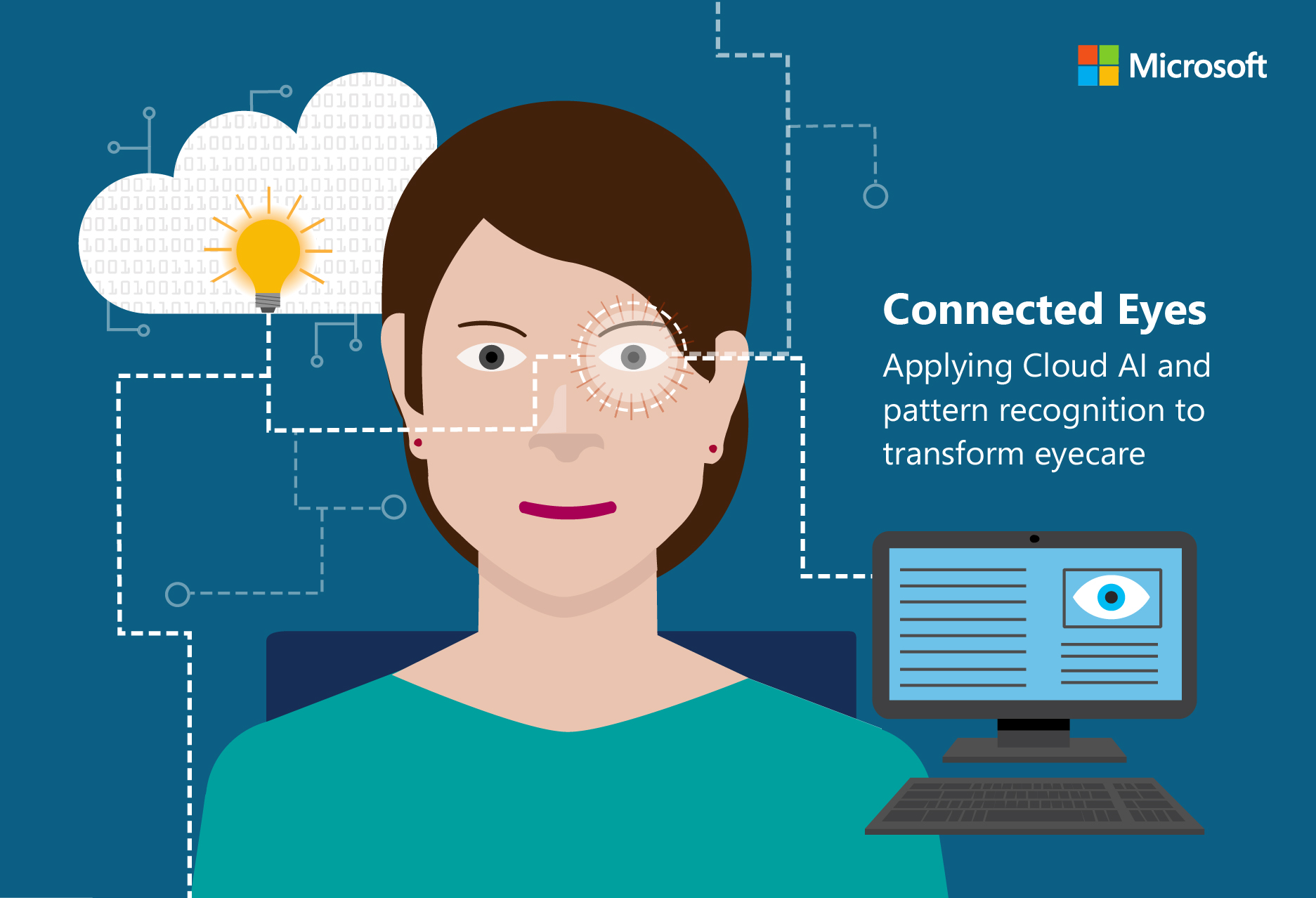Leveraging Cloud Artificial Intelligence (AI) to transform eyecare
What if a patient has undergone an eye surgery only to discover a residual refractive error as a side effect later? While the surgery may have corrected the near-sightedness, farsightedness or astigmatism, post-operative tests may show poor uncorrected visual acuity (UCVA) indicating that a refractive error persists.
Data recorded during patient examination has the potential for collective analysis that can predict the success of surgeries, thus enabling patients to make informed decisions. With this insight, Microsoft has been using Power BI, machine learning and data mining techniques to unlock insights to help tackle avoidable blindness. Our efforts are aimed at empowering patients and medical professionals to realize the true potential of data-driven healthcare.

At Microsoft, we’re inspired by the belief that the science of machine learning can improve healthcare across the world. Connected Eyes unveiled at the Strata+Hadoop conference in New York is an attempt at applying AI and pattern recognition to ophthalmology on a global scale. The cloud-based machine learning research project has been ramping up with a steady collection of crucial eyecare data from across India. Collating eyecare data from rural and urban communities helps us create a pool of knowledge that can be used to predict the outcomes of eyecare interventions.
Estimates suggest that nearly 55 million people in India suffer from blindness. 80% of these cases could have been prevented with early interventions and adequate treatment. With this in mind, the Connected Eyes initiative was launched in April 2015 with the L V Prasad Eye Institute (LVPEI) in Hyderabad. The institution utilized Microsoft’s Azure cloud infrastructure to collect and analyze on-premise Electronic Medical Records (EMR) collected from their various medical centers across India.
LVPEI then started working with Microsoft on two machine learning scenarios: predicting LASIK (Laser-assisted in-situ keratomileusis) surgery success and forecasting Sphere for children. This engagement has been expanded to many more models. LVPEI has also been applying Azure Machine Learning and Power BI to drive last-mile-connects in patient eyecare.
Shared global pursuit to improve eyecare
Learning from these initiatives, Microsoft and LVPEI brought together other global eyecare institutions with the common aim to tackle avoidable blindness. With the worldwide consortium, Microsoft Intelligent Network for Eyecare (MINE), announced late last year, Microsoft has taken the next step in the global eyecare revolution. In collaboration with LVPEI, MINE involves Bascom Palmer - University of Miami, Flaum Eye Institute – University of Rochester, both leading eyecare providers in America and eminent eyecare institutions such as Brazil's Federal University of Sao Paulo and the Brien Holden Vision Institute of Australia.
New-age eyecare that can potentially impact billions
Data collected from thousands of patients who receive healthcare at their local hospital can be applied to treat millions of people with similar medical needs. This forms the cornerstone of the Connected Eyes initiative.
Hospitals equipped with Microsoft’s machine learning infrastructure collated data on 791 LASIK surgeries. The task was modeled as a regression problem. Multiple regression models and a large number of pre-operative examination details and patient demography features were experimented with. Applying machine learning methods to this data, post-operative UCVA was pre-empted with statistically significant results.
Data collected on a community level can be deployed to help further medical research. The network has already succeeded in scaling from thousands to a hundred thousand patient trials across India. Indeed, MINE is an integral part of India’s digital transformation journey. The ensuing vision is to leverage this model globally to scale from millions to billions of people.
Conclusion
Microsoft is committed to enable doctors and researchers across the world to tap into the network and use high-quality medical records to help tackle critical eye issues. Microsoft’s advanced AI platform could help doctors in rural and remote communities leverage a wealth of data and cutting-edge techniques to treat patients on a grassroots level. For example, an optometrist in a remote part of Nagaland in northeast India, can enter specific data about the patient and let the algorithm suggest appropriate treatments and medicines based on a swift analysis of similar cases around the world.
The MINE consortium is working on a three-step process. Collecting data from the last-mile, using that anonymized data to build intelligence, and following rigorous testing and validations, in using intelligence to help deliver tangible results for global medical researchers. Connected Eyes is Microsoft’s vision for a future where medical research is not restricted to silos, but collated through collaboration for predictive and effective treatments.
Connected Eyes and MINE are aimed at leveraging technology to solve critical eye diseases on a macro scale. Not surprisingly, Connected Eyes is dubbed by Fast Company - the world’s leading progressive business media brand focused on innovation in technology, leadership, world changing ideas, and design - as a bold visionary project. It is ranked among the finalists in the first-ever World Changing Ideas Award this year.
At Microsoft, we believe, this initiative will aid in deriving strategies that can help prevent avoidable blindness and increase efficiency in eyecare globally.
Comments
- Anonymous
April 20, 2017
Excellent Article! We are doing similar things with Ojosparamipais in México!